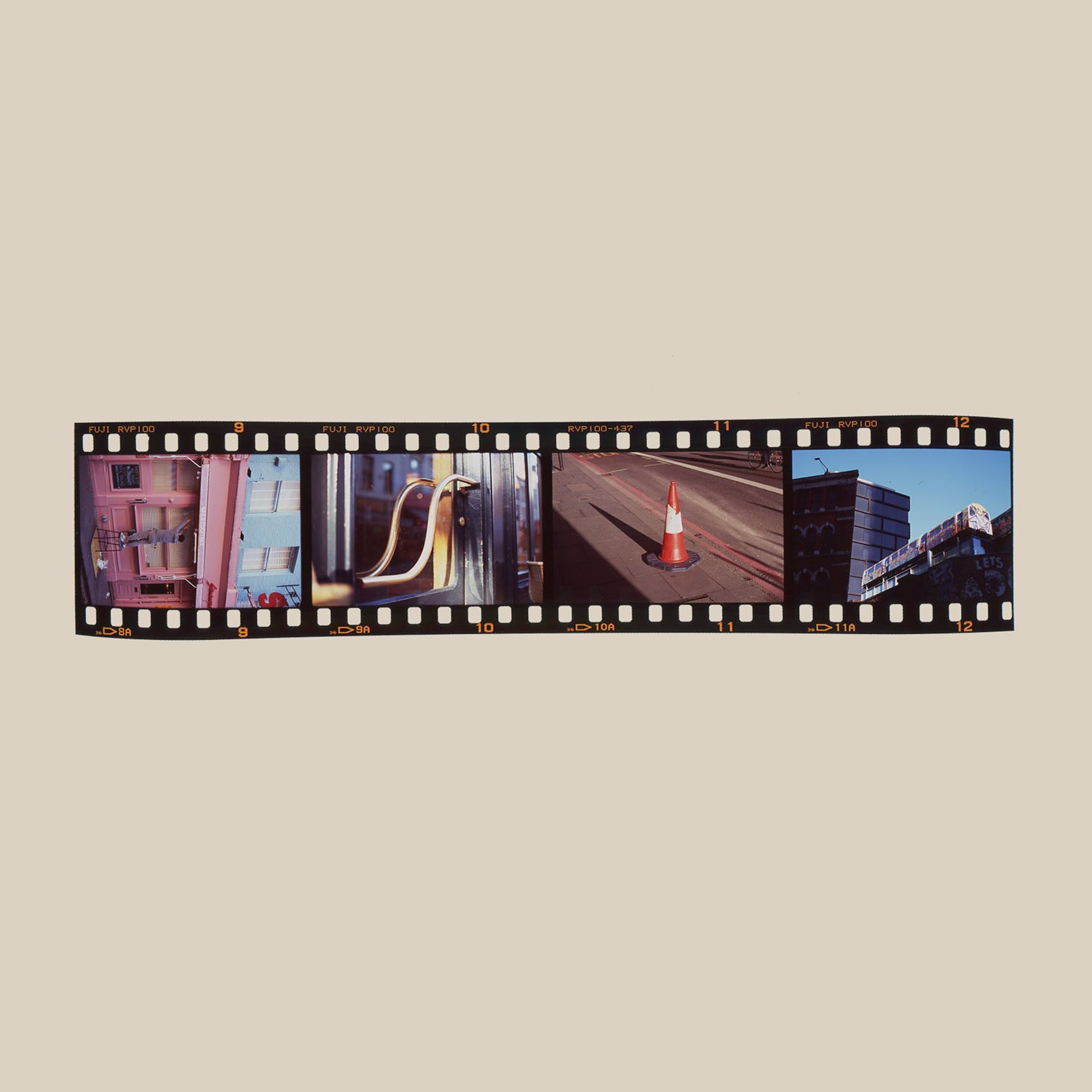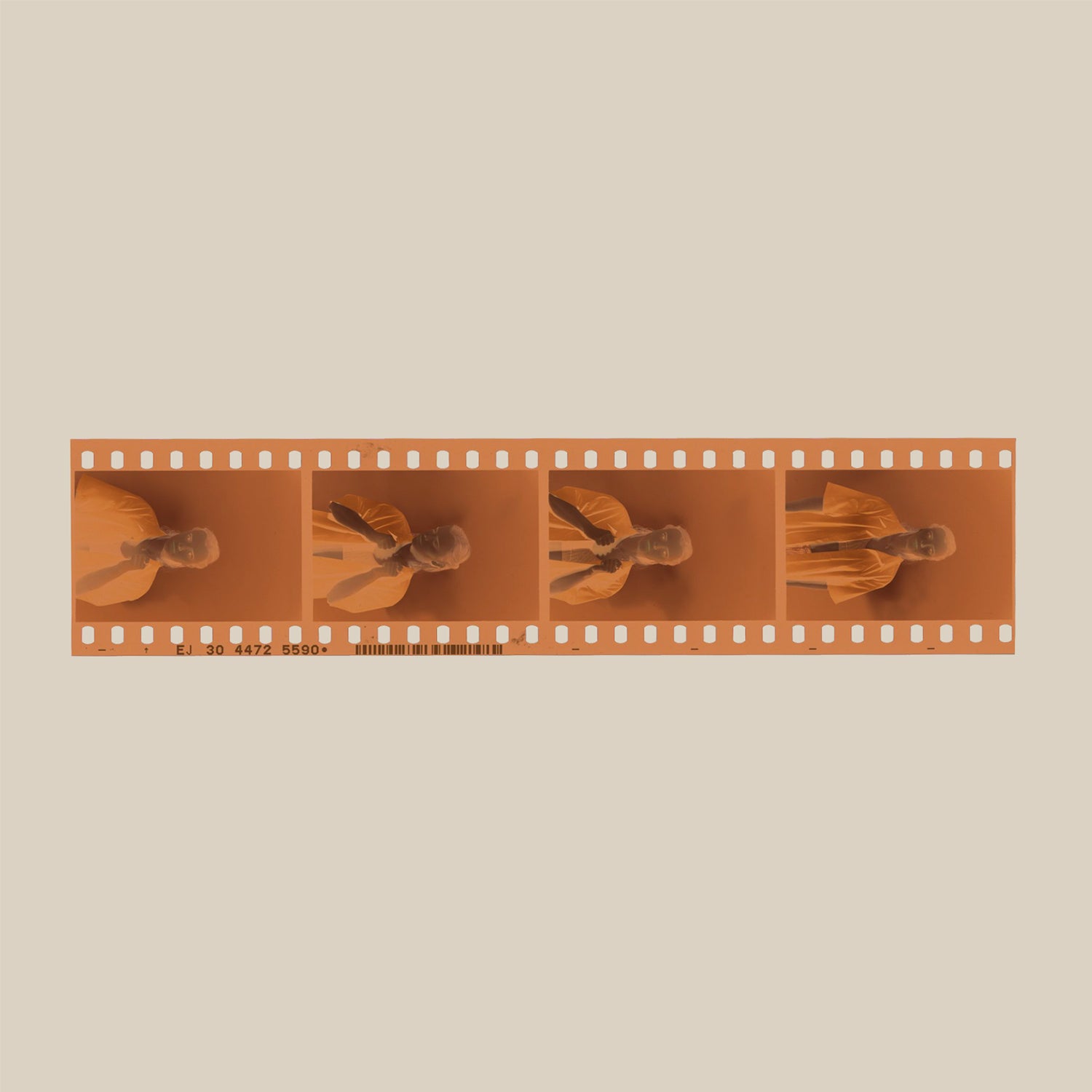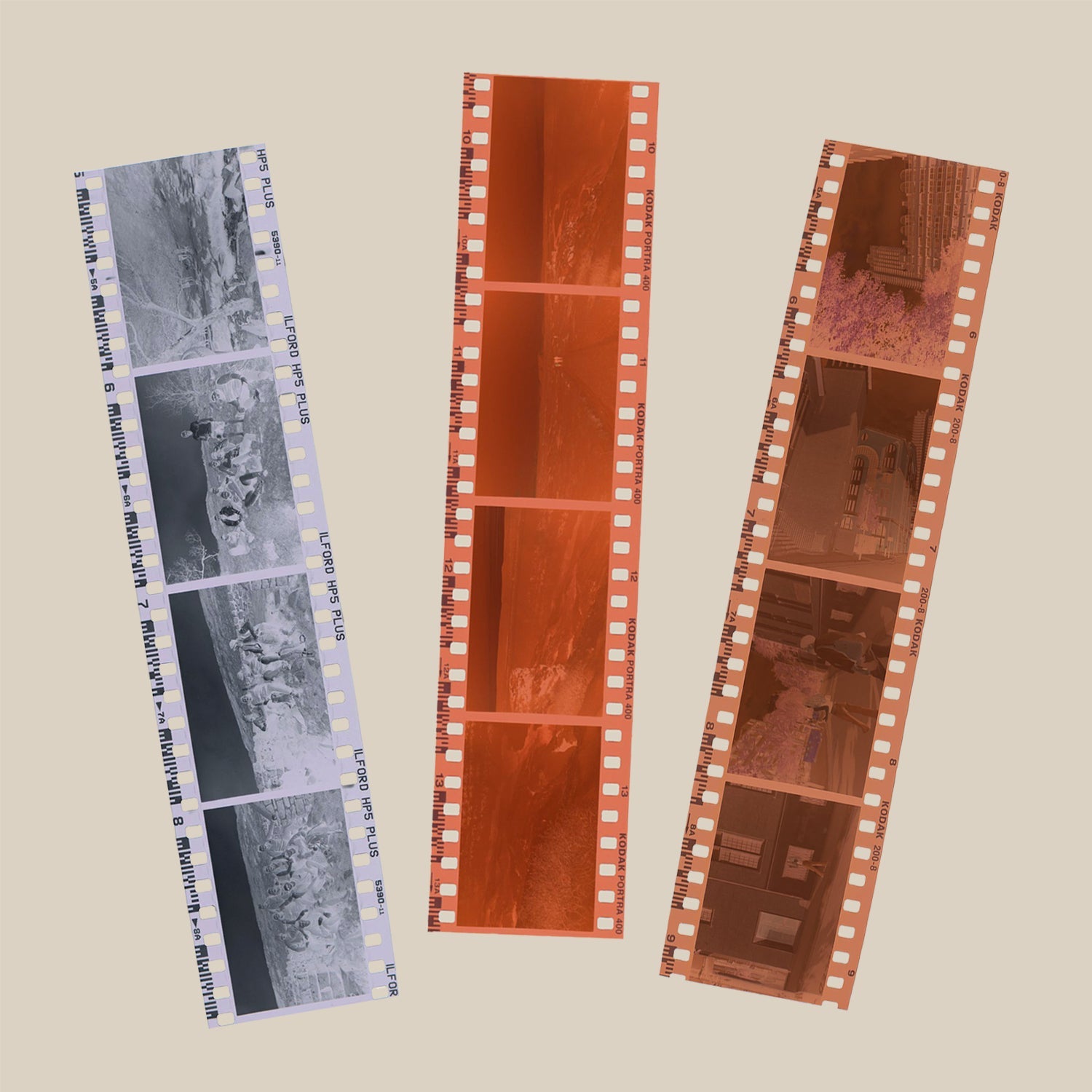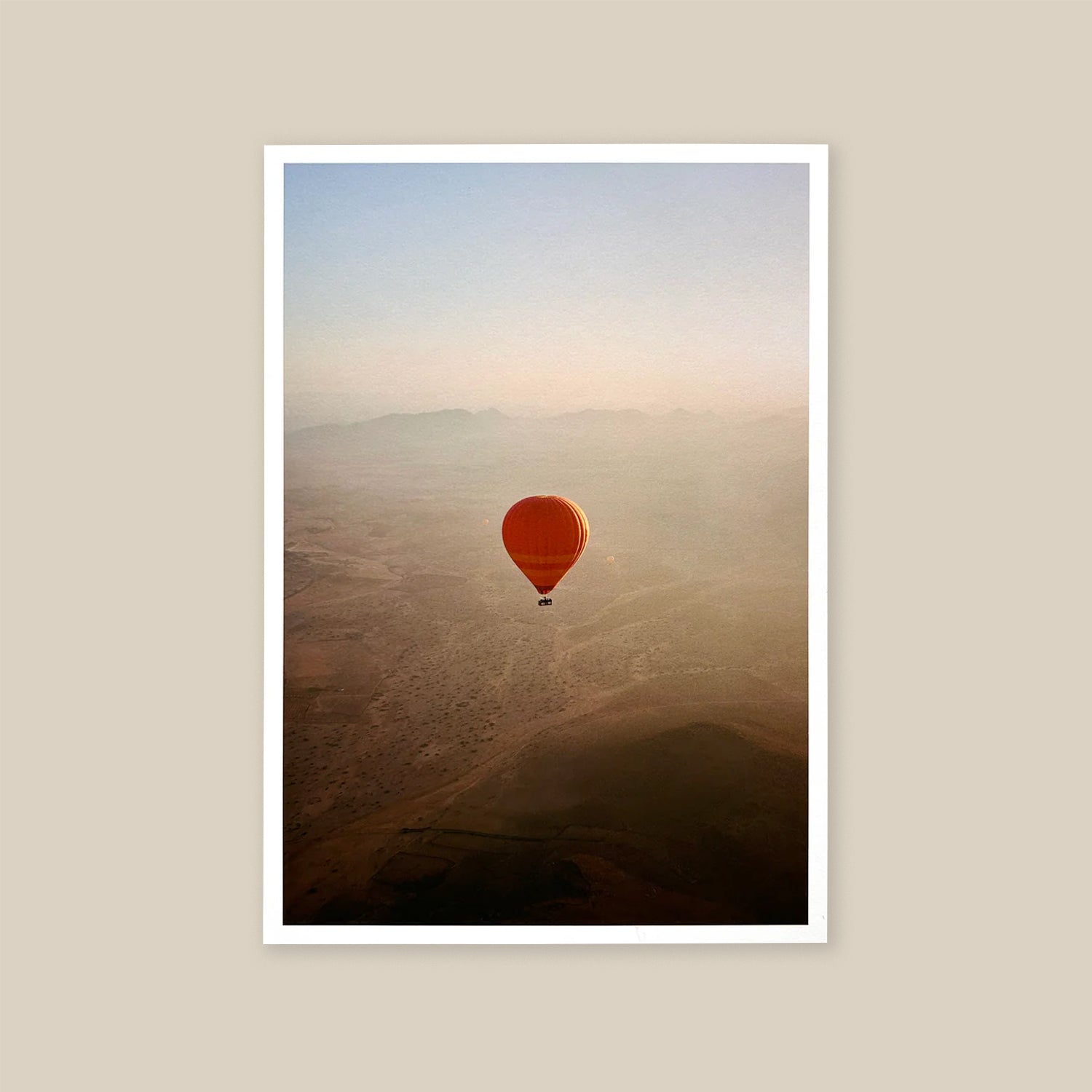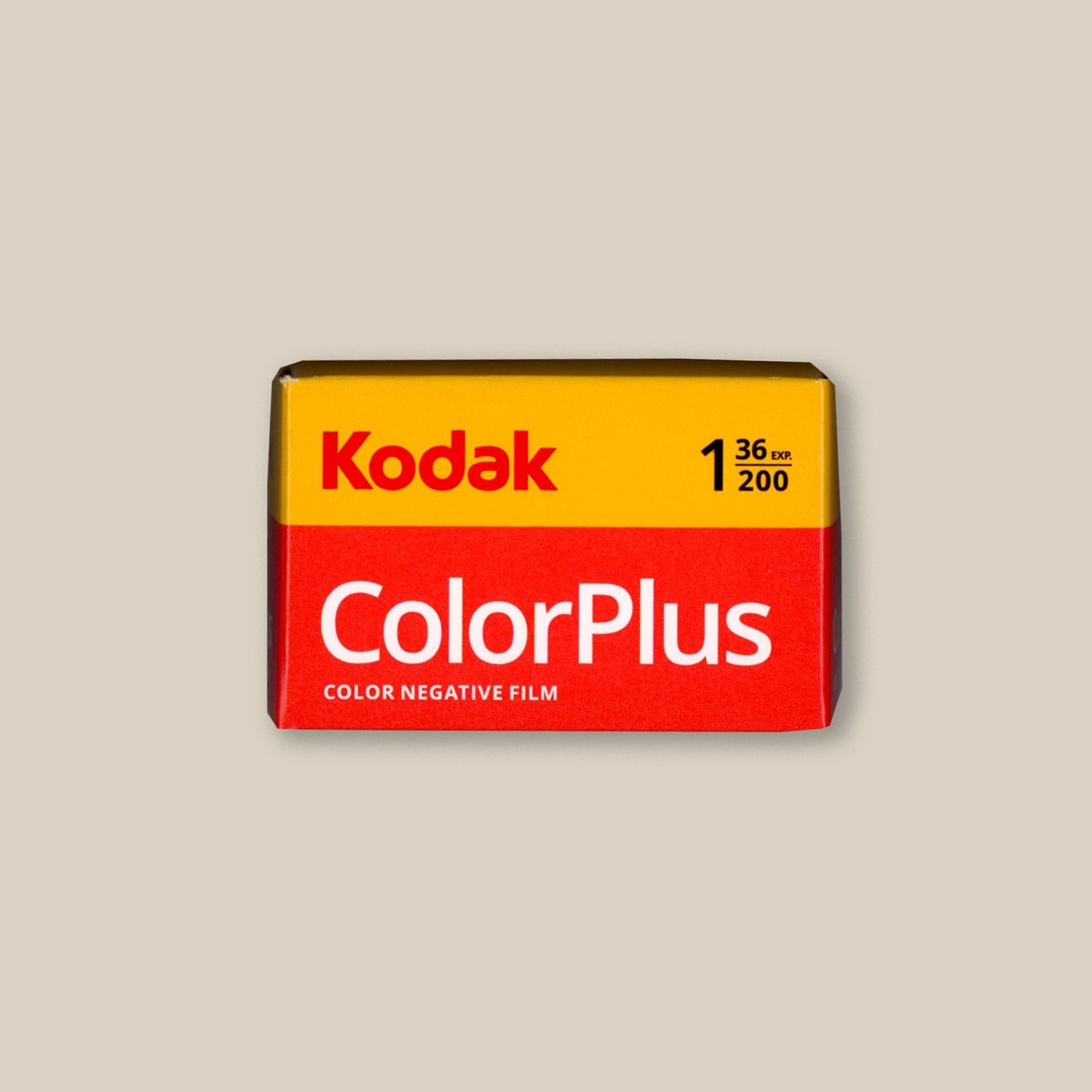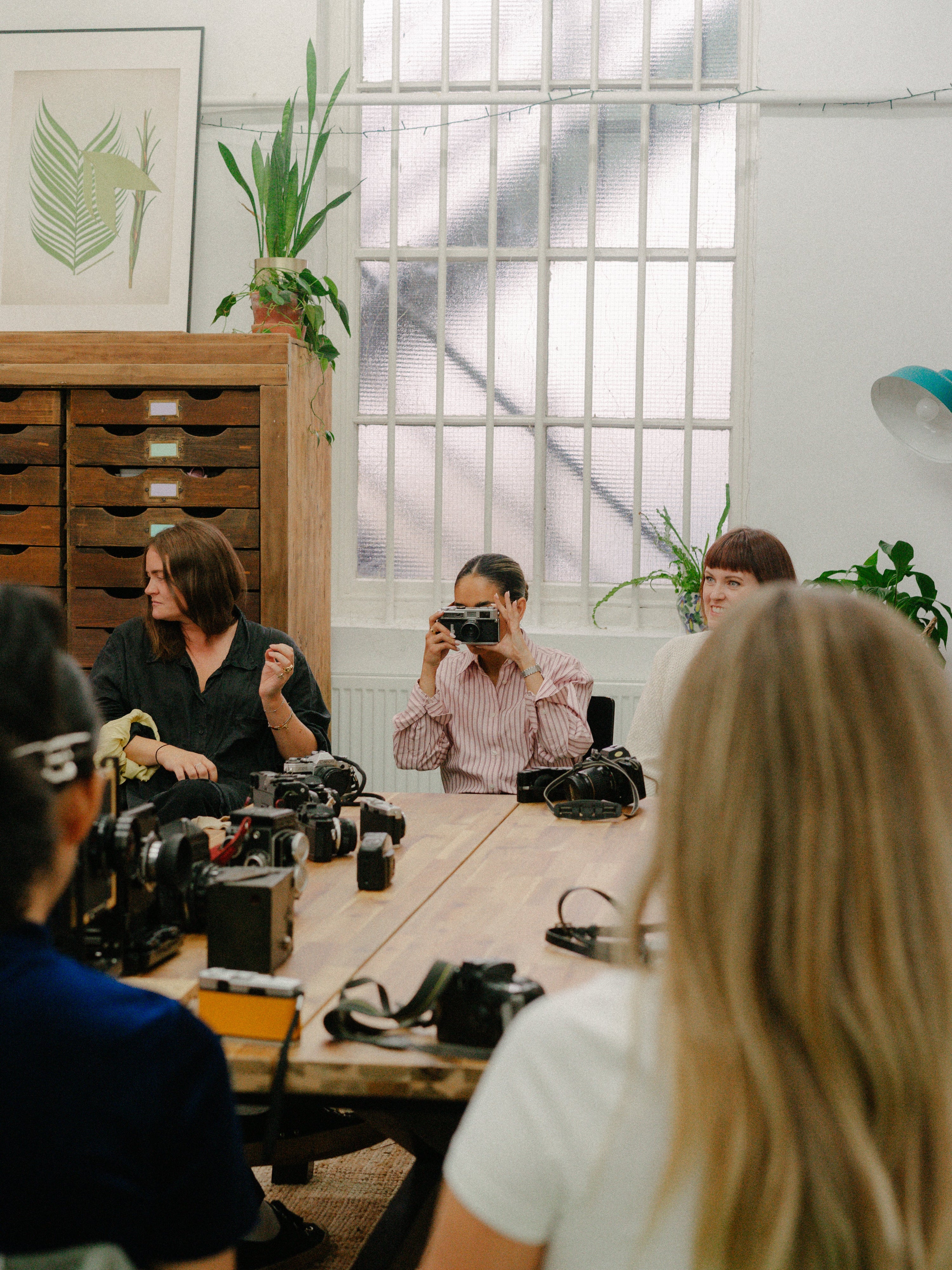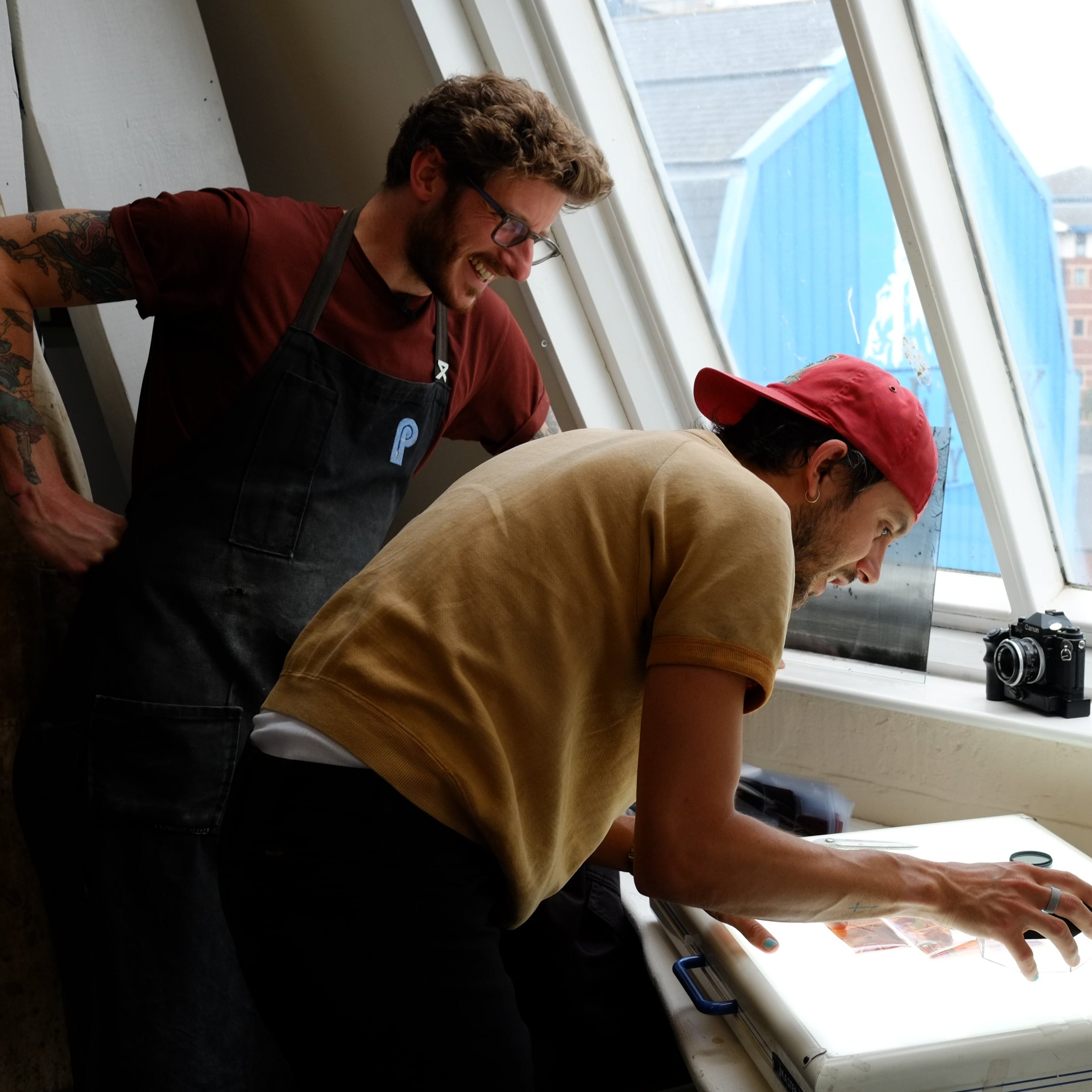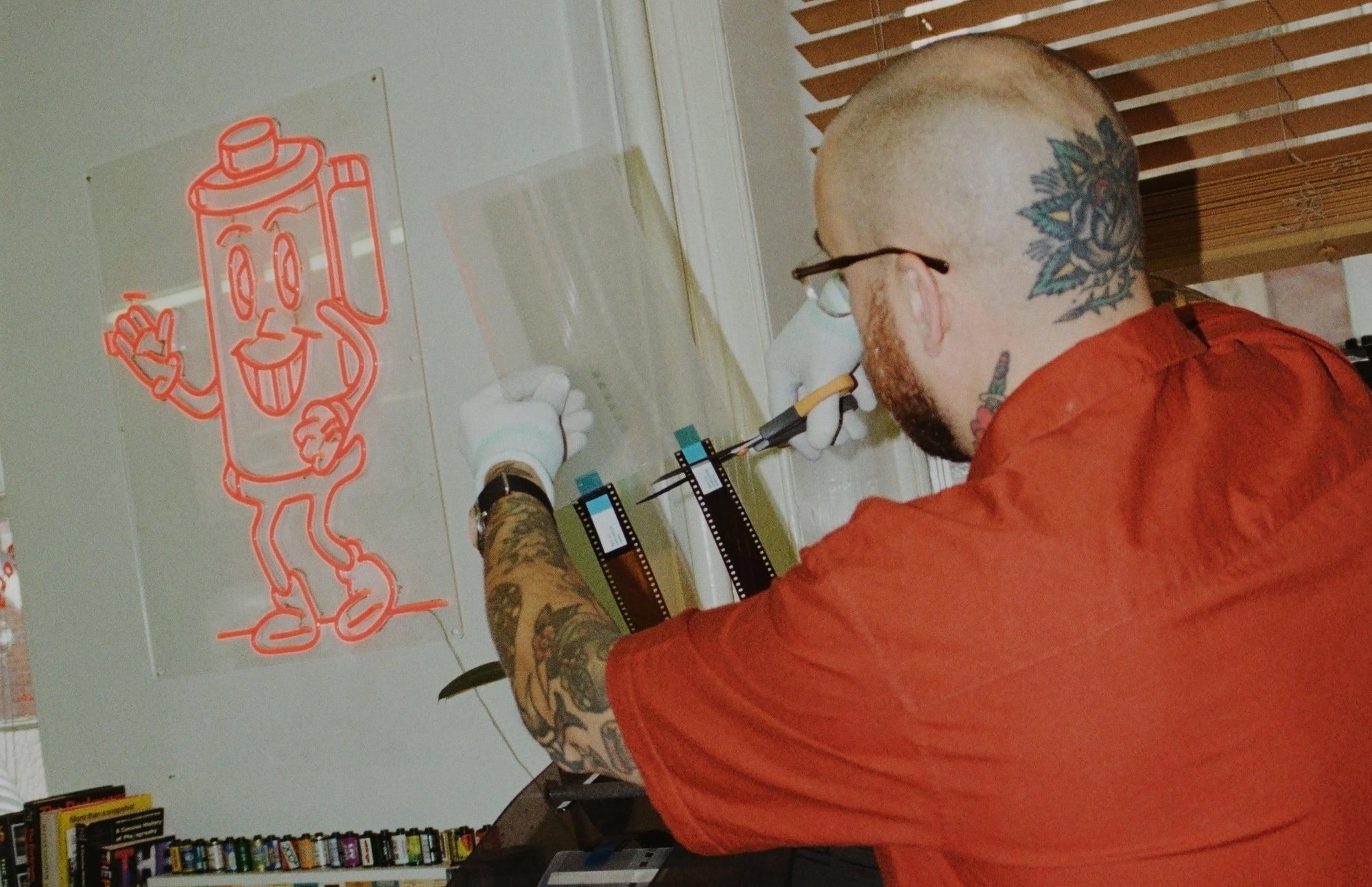

How We Develop Your Film: Inside The Noritsu V50 Film Processor
When most people think about film development, they picture a darkroom: trays of chemicals, red safelights, and someone in an apron agitating film by hand. While that’s still very much part of traditional black & white processing, the way most colour film is developed today looks quite different.

At our lab we use what’s called a mini lab, specifically the Noritsu QSF-V50 (photographed above). This workhorse, covered in the stickers you lot have sent us in the post, is a roller transport film processor built in Japan and originally released in 1987 for the C-41 colour process.
Unlike a more traditional manual wet lab, where each chemical step is done by hand, our Noritsu V50 automates the whole process. Once your film is loaded in, it moves through the machine on a kind of controlled conveyor belt, passing through each chemical bath with precise timing, temperature, and agitation. This ensures consistent results, faster turnaround times, and reduced risk of handling errors. It’s an ideal setup for us since we're processing multiple hundreds of rolls each day.



Your film is first attached to a plastic leader card that guides it through the machine. From there, it travels through a series of chemical tanks: developer, bleach, fixer, and stabiliser. At the end, the film comes out dry and ready to scan.
Here’s what’s happening inside the Noritsu V50, step by step:
Developer: This is where the picture actually appears. The developer reacts with the light-sensitive layer in your film, turning the invisible image you captured into something visible. It brings out the colours in the image based on how much light each part of the film was exposed to when you took the photo.
Bleach: Next, the bleach removes all the leftover parts of the film that didn’t get turned into an image. This helps clean things up and makes sure the colours are clear and accurate.
Fixer: The fixer makes the image permanent. After this step, your film is no longer light-sensitive, and the colours are locked in. It also helps prevent the image from fading over time.
Stabiliser: The final bath protects your film. It stops mould or bacteria from growing and helps the film dry without streaks or water spots, so your scans come out clean and sharp.
Drying: Once the film has been through all the chemical steps, it goes into a drying section where warm air gently removes any moisture. It comes out the other end of the machine completely dry and ready to be scanned.
That’s the full journey from exposed roll to developed negative, all handled with precision by the Noritsu V50. It’s a system designed for consistency, quality, and speed, helping us get your film back to you as smoothly as possible.

If you're ready to see your own film go through the Noritsu, we offer high-quality C-41 and B/W developing and scanning with fast turnaround and careful handling at every step. Whether you're shooting 35mm or 120, you can drop your film off at our Leeds-based store or mail it in via our online system.




